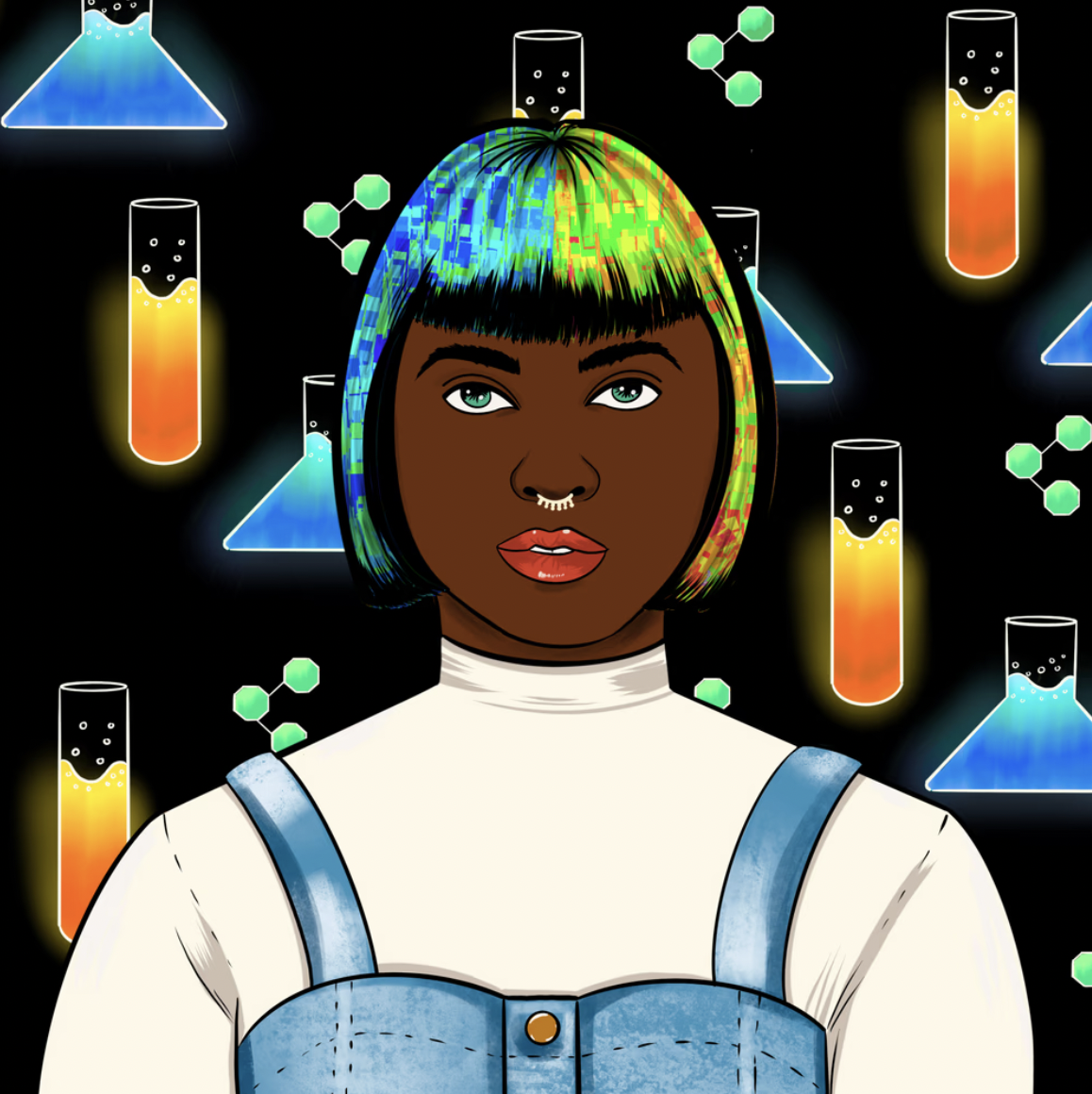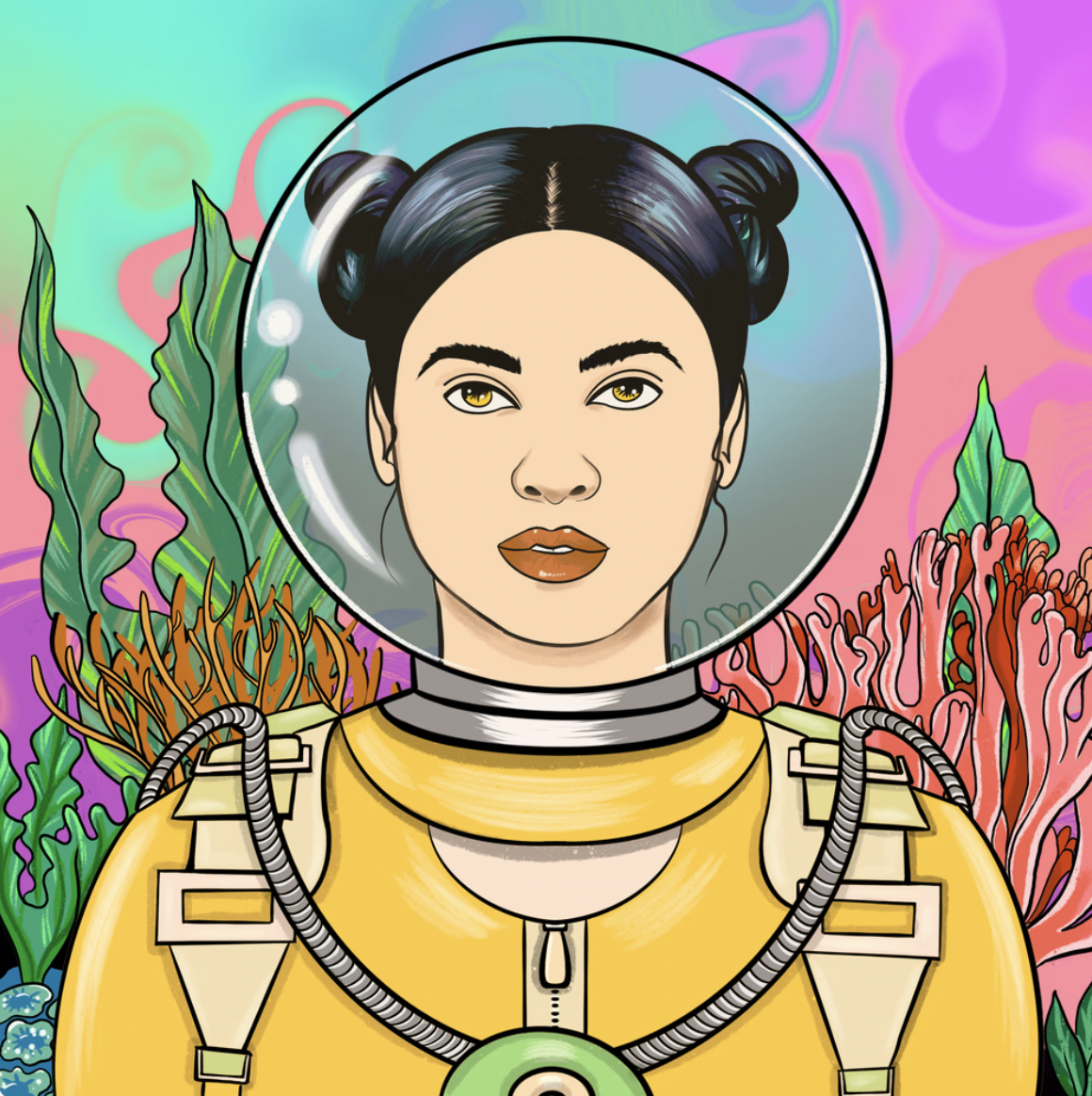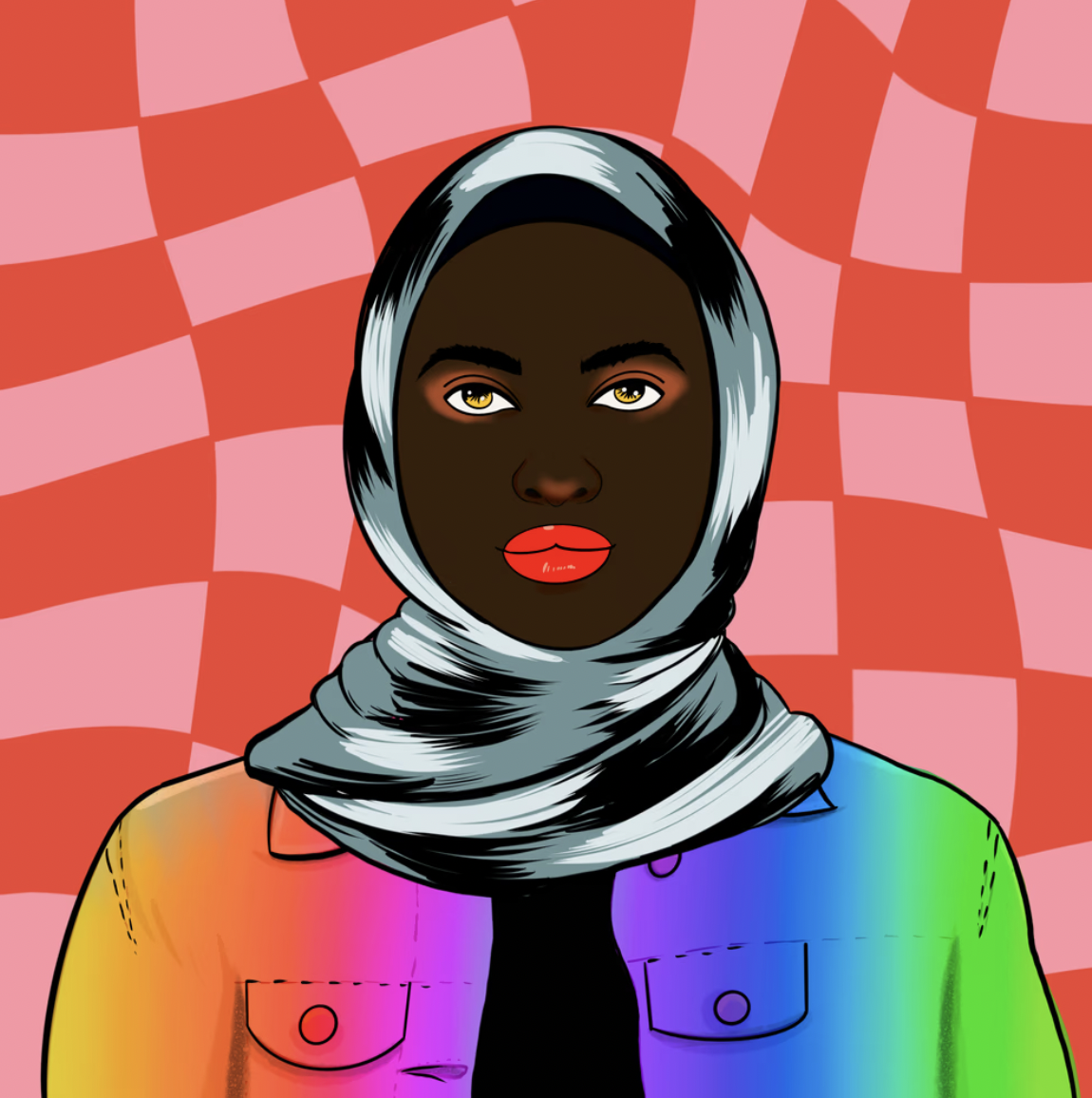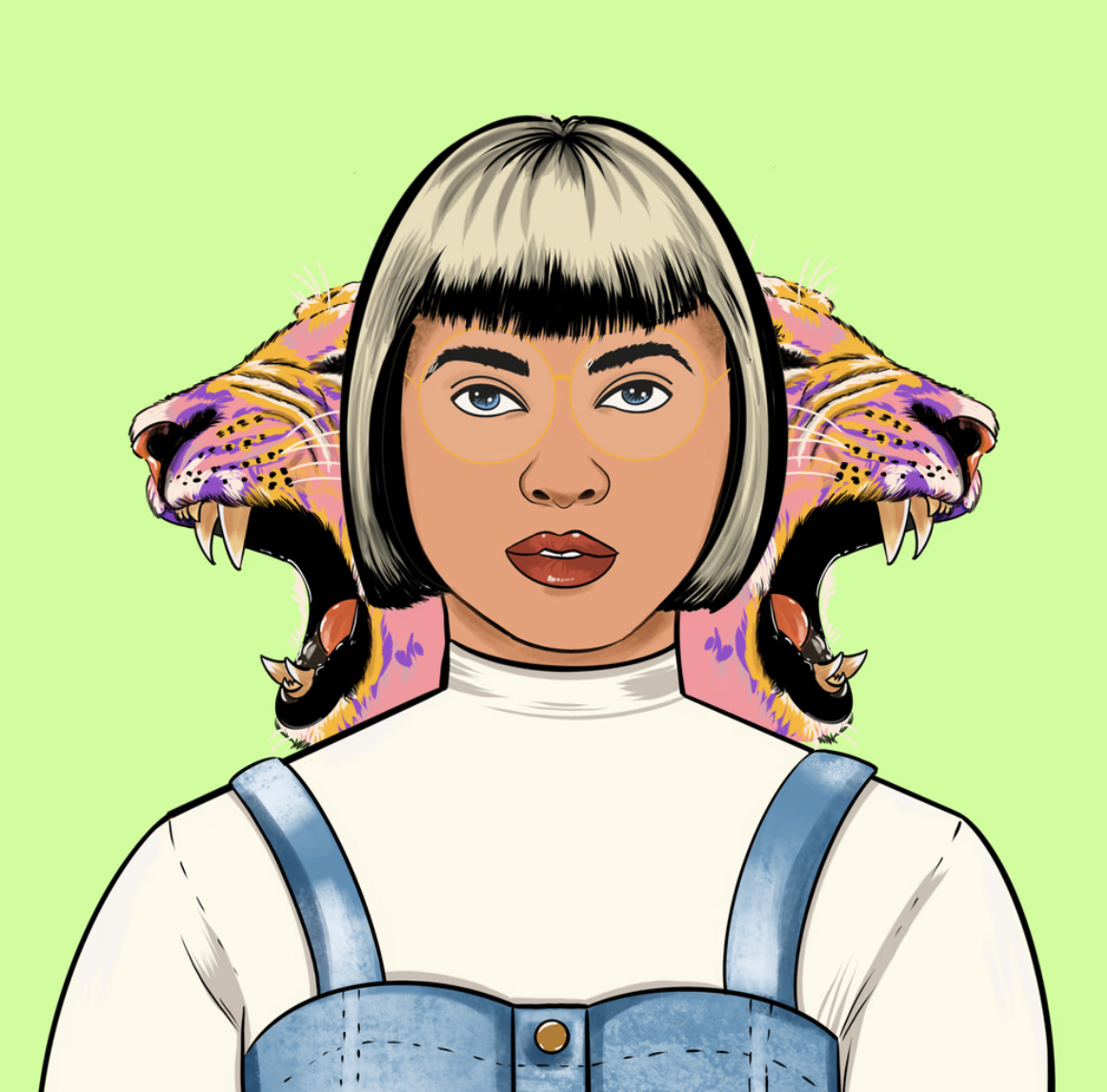Women Rise founder Maliha Abidi on art, education and web3

There is a delay between the moment Maliha Abidi’s avatar flickers on the screen and connects to her audio. In the first silent seconds, a stretched canvas reveals itself on the wall behind her. A crescent of a woman’s painted form, a graphic rose hidden within dark waves of hair, creeps out from behind Abidi’s silhouette.
The Woman’s Outline is by Madam Noor Jehan, an award-winning singer and actress who made waves as the first female Pakistani film director, inspiring countless generations of women. Abidi partially eclipses Jehan in the frame, which seems appropriate because, although she is in the early stages of her career as an artist-activist, they share a stubborn productivity.
Over the past fifteen months, the Pakistani-American polymath and founder of Women Rise NFTs has taken the Web3 community by storm. Her collection of 10,000 portraits depicts imagined women imbued with a sense of power and purpose. Although fictionalized, they are meant to spark the imagination of a younger generation of women. Like much of her oeuvre, the Women Rise portraits share a similar aesthetic: a vibrant color palette, minimal shading and graphic lines. But Women Rise is about much more than art; The collection aims to raise funds and awareness for charities such as the Malala Fund and The Girl Effect.
Since its launch in November 2021, Women Rise has ambitiously expanded from an extension of Abidi’s artistic practice to a more socially engaged platform that collaborates with other organizations – such as Qissa and CAMFED – that encourage women’s agency, equality and education. What seems self-evident is that, like the audience she hopes to inspire, Abidi reminds herself through the work that what can be dreamed can also be manifested.
We sat down with Abidi to discuss art as a tool for education, the importance of representation and the need for more women in STEM.

nft now: Social justice is a big part of your practice as an artist, writer and founder of Women Rise. Which issues do you think are most important?
Maliha Abidi: When it comes to issues close to my heart, I think girls’ education is at the top. Well, I tend to talk about women’s rights and girls’ education. So linked to girls’ education, there are several other topics such as mental health.
nft now: Do you find it challenging to focus on so many cases with their particular challenges?
MA: Yes, they are individually very large subjects, but to me they are still connected. For example, if you talk about women’s rights, you have to touch on girls’ education because there are 130 million girls who are currently not in school. If you talk about girls’ education, you have to talk about the impact of period poverty. Speaking of which, you also have to factor in how childbearing age plays a role in all of this. I’m no expert on these topics, but I’m getting educated as I go. I want to use my art as a tool to learn and spread what I have learned.
nft now: When I look at Women Rise, I see portraits of women standing in their power and embodying a wide range of identities. What does the idea of representation mean to you?
MA: What I heard was that you were going to be a doctor, engineer or lawyer. But in Pakistan, these careers are not high-paying jobs like they are in the United States. If a girl is encouraged to become a doctor, it means that she can get a good proposal. In Pakistan, there is a phenomenon called the “doctor-bride phenomenon”. Your in-laws want a relationship to happen because you are a doctor, and that makes you more desirable, but when you get married, you are not allowed to practice your profession because your role has changed to mother.
That’s why I made my books — because I saw so many of these incredible women who are also in sports and the arts and teachers and activists. And yes, there are doctors, but on their terms. Representation can open up that conversation in your family as well. I can say, ‘look at this amazing Pakistani woman who is a woman in sports.’ So it is an internal dialogue as much as it is an external one.



nft now: Like you said, if you’re raised with a dominant cultural narrative, a young woman may not even know what’s possible. As soon as you hear a story, whether through art, cinema or pop culture, that material has the potential to open doors in a person’s imagination. What has opened up in your imagination since the start of Women Rise?
MA: When Women Rise first launched, I remember there weren’t many women leading [NFT] projects or projects representing women. I only remember a few female founders paving the way. But I think at the time it was also about just taking up space. There aren’t many communities with people from my background taking up space in the crypto finance industry. I wanted to create a project like Women Rise with a Pakistani team, but then have a community that is truly global [allowing us to] represents women’s rights on many different stages and platforms.
nft now: One of your goals for Women Rise has been to encourage young women to enter STEM fields. Can you tell me about your journey into neuroscience and the challenges you have faced?
MA: At the moment I don’t do neuroscience anymore because every room is very demanding. Balancing art and my studies was always difficult. I was a broke student, but then I wanted to make this book, and I wanted to find time to make art too.
Somehow I worked weekends at an art shop to qualify for the employee discount so I could buy art supplies and the book, my artwork and train tickets so I could then go to university five days a week. Around the same time I opened up this side business selling chocolate covered strawberries […] around campus. It has always been very difficult to balance everything.
When it comes to STEM, we need more women in these fields. How is it that less than three percent of women get VC funding? How is it that this number is even lower for women of color?
We need to encourage women and girls from a very young age and create environments that are nurturing. When it comes to STEM, it’s one of the hardest places to survive, and the women who have paved the way, for example, need us to constantly celebrate them. Through that celebration, we kind of plant seeds so that more women can come into this space. But it’s not just women’s and girls’ responsibility to do that, it’s everyone’s responsibility.























